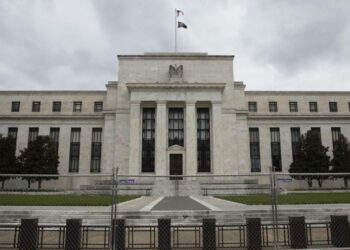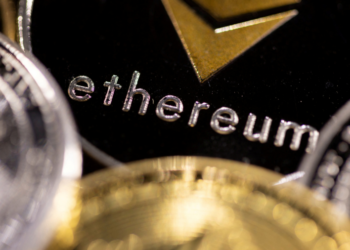The writer is an FT contributing editor
In October of 2020, the Kansas banking commission closed down a state bank in Almena, a railroad town just below the border with Nebraska. The Federal Deposit Insurance Corporation, which guarantees consumer deposits at American banks, paid $18mn to make every depositor whole. It was an unremarkable intervention. The banking commission stepped in on a Friday, with no interruption in deposits over the weekend. This was the last time a bank failed in America.
The collapse of the Almena State Bank, and the rescue of its depositors, went unmentioned this week when Nellie Liang, the US Treasury’s under secretary for domestic finance, testified in Congress. Her appearance followed a Treasury report in November on stablecoins, digital assets pegged to a sovereign currency. If you hold a dollar stablecoin — Tether, or the USD Coin, or the Binance USD — you are holding something that’s supposed to be exactly as valuable as a dollar bill.
The Treasury believes that stablecoins could make transferring dollars from one place to another cheaper and more efficient, a development desperately needed and long overdue in America.
But the Treasury also recommended that stablecoins be issued only by insured depository institutions — consumer banks, just like the one in Almena. That is a more contentious proposal, and it is also a question for the very near future. Since January of 2020, the total supply of dollar stablecoins has grown from $6bn to $174bn. For a sense of scale, last quarter, one of the biggest US consumer banks Wells Fargo reported $864bn in consumer deposits. Stablecoin supply is now at almost exactly one-fifth of that — brand-new, liquid financial liabilities that didn’t exist two years ago.
Republicans on the committee argued that forcing stablecoins into FDIC-insured banks would discourage innovation. But the problem with innovation is that the one form of it financiers most ardently desire is actually just the oldest trick in finance: borrow short-term liabilities, then balance them against long-term assets that are either crummy or do not exist.
Take the Almena State Bank. In 2014, according to a report from FDIC’s inspector general, the bank began an aggressive strategy of taking on government-backed small-business and agricultural loans. The bank decided to sell off the guaranteed portions of the loans, then keep the rest of the risk on the bank’s books. Making a lot of loans quickly is a great way to create non-performing loans, something the Kansas examiners told the Almena State Bank, repeatedly. That’s not innovation. That’s just holding crummy assets.
A stablecoin provider is a bank. It’s not like a bank; it’s a bank. When you buy a stablecoin, you are offering the provider a dollar loan, just like when you deposit a dollar in a bank. And, just like the bank does, the stablecoin provider has to hold enough performing assets to redeem that dollar loan for an actual US dollar on demand. Stablecoins, just like bank deposits, are “runnable” — if people get worried about the quality of a coin provider’s assets, they will take all their dollars back, quickly, all at the same time.
Morgan Ricks, a professor at the Vanderbilt Law School and a former Treasury official, calls this the “money problem” — if you create a financial liability that’s liquid like money, then it’s inherently runnable. If you want to create money, you can choose not to call yourself a bank, but you will still have the money problem. So there’s nothing inherently dodgy about stablecoins. But there is something inherently dodgy about banking, which is why countries build elaborate regulatory regimes to protect deposits.
You can read every regulation as the history of a disaster. In the roaring 1920s in America, several hundred banks failed every year. Consumers had to think carefully about where they deposited their money, because if they made the wrong choice, their deposits would disappear. In 1933, at the peak of the early-Depression banking crisis, 4,000 banks failed. In 1935 the US Congress created the FDIC to protect deposits.
You can say that people are adults and should do their research before buying a dollar stablecoin, but that’s not how financial crises work out in real life. When a lot of people watch what they thought had been money simply disappear, there is unrest. And so countries have learned how to regulate consumer banks aggressively, and plan for when they fail anyway. There are a lot of problems in American finance, but consumer deposits aren’t one of them.
The Treasury Department has proposed to treat stablecoin providers like deposit banks because they are deposit banks, and America has already worked out a system to keep deposits safe. The regulatory goal for stablecoins should be the same as for banks like the Almena State Bank in Kansas: to keep them from failing, and if they must fail, to make sure they fail quietly.











